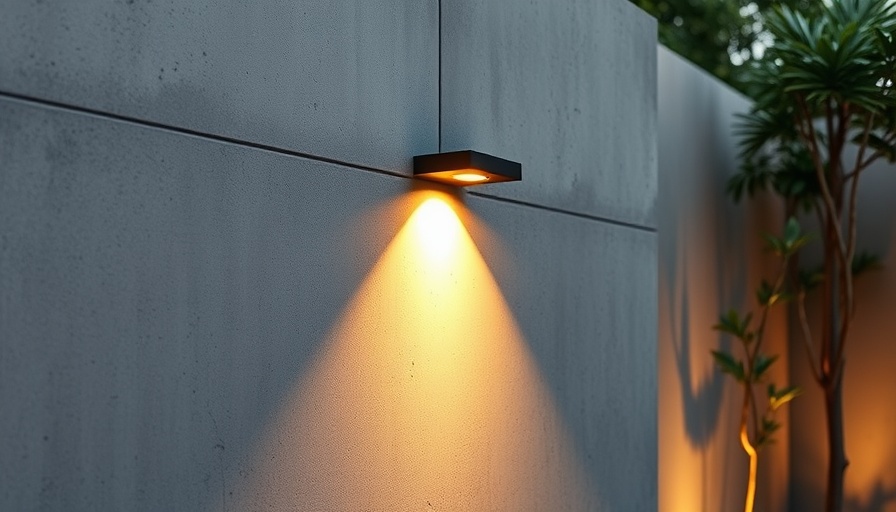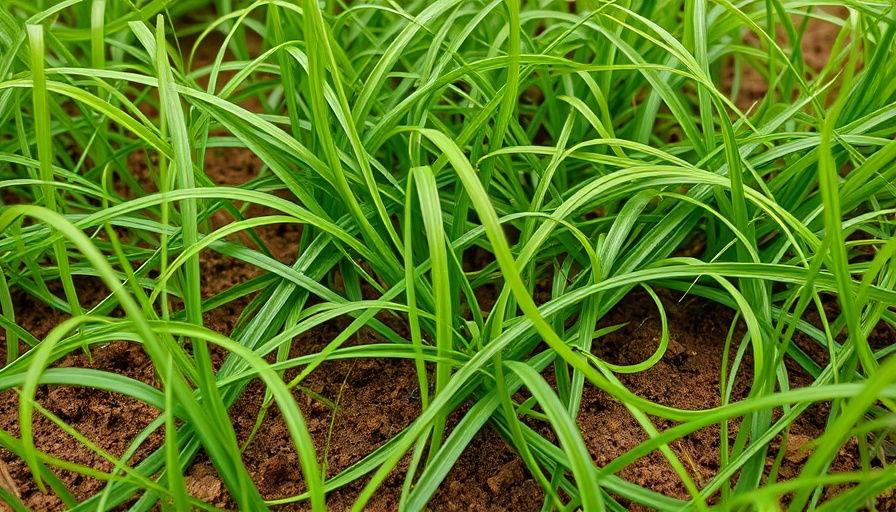
Illuminate Your Outdoor Spaces: The Allure of Downlights
As homeowners increasingly seek to enhance their outdoor environments, downlights have risen to prominence. Unlike traditional outdoor lighting options, which can cast harsh glare into the night sky, downlights offer a subtle and sophisticated illumination. By directing light downward, they not only complement the natural landscape but also create a sense of safety along path edges and in stairwells. With minimal light pollution, they respect both our nocturnal setting and the wildlife that shares it.
Why Downlights Are a Must-Have for Your Home
Choosing downlights means investing in both aesthetics and functionality. Whether you are illuminating a pathway, highlighting architectural features, or creating a cozy, intimate setting for outdoor gatherings, downlights can do it all. Additionally, products like the ORCA x Ceramicah Sconce, with its stunning aesthetic and eco-friendly design principles, prove that sustainability and style can go hand in hand.
Stylish Selections for Every Budget
When it comes to selecting the perfect downlight, the options can be overwhelming. However, you don't need to compromise on quality or design. From the beautiful clay ORCA x Ceramicah Sconce priced at $935 to more budget-friendly options like the Progress Lighting Outdoor Wall Sconce at $70, there’s a downlight available to suit every style and budget. Each of these lights has been thoughtfully designed not just to function, but to enhance the visual appeal of your exterior spaces.
Downlight Trends: What’s Popular Now?
The trend toward minimalism in outdoor lighting is on the rise, with homeowners opting for sleek and understated designs that blend seamlessly into their environments. For instance, the St. Ives Mast Light, crafted from hot-dipped galvanized steel, embodies durability without sacrificing style. These up-and-coming trends reflect a growing awareness of how lighting affects our overall well-being and the environment.
Creating a Cohesive Outdoor Lighting Design
Integrating downlights into your broader outdoor lighting scheme can transform your space from basic to breathtaking. Consider layering your lighting by combining downlights with ambient lights and pathway fixtures. The contrast of light and shadow can create visual interest and enhance safety. Moreover, using downlights alongside other technologies like smart lighting can help personalize and control the ambiance, making your outdoor area usable day and night.
DIY Installation: Enhancing Your Skillset
Installing downlights can be a fun DIY project for homeowners interested in honing their skills. With the right tools and guidance, making this enhancement can be a fulfilling experience. Whether you choose to hire professionals or tackle the installation yourself, understanding the basics of downlight placement and wiring can empower you to make educated decisions in the future.
The Eco-Friendly Element: Light Pollution and Sustainability
In a world increasingly affected by light pollution, downlights present a conscientious choice for environmentally-aware homeowners. By limiting glare and directing light where it’s needed, downlights can reduce the impact of artificial light on wildlife and energy consumption. It's a step forward in sustainable living and an effort to protect the night sky for future generations.
Realizing Your Vision: Take the Next Steps
As you consider enhancing your home with downlights, remember that the right choices can lead to stunning results. Evaluate your space’s needs, explore stylish options, and dive into a project that can elevate both your home’s beauty and functionality. Maybe it’s time to consult design professionals who can provide insights and resources suited to your dream outdoor setting.
 Add Row
Add Row  Add
Add 




Write A Comment